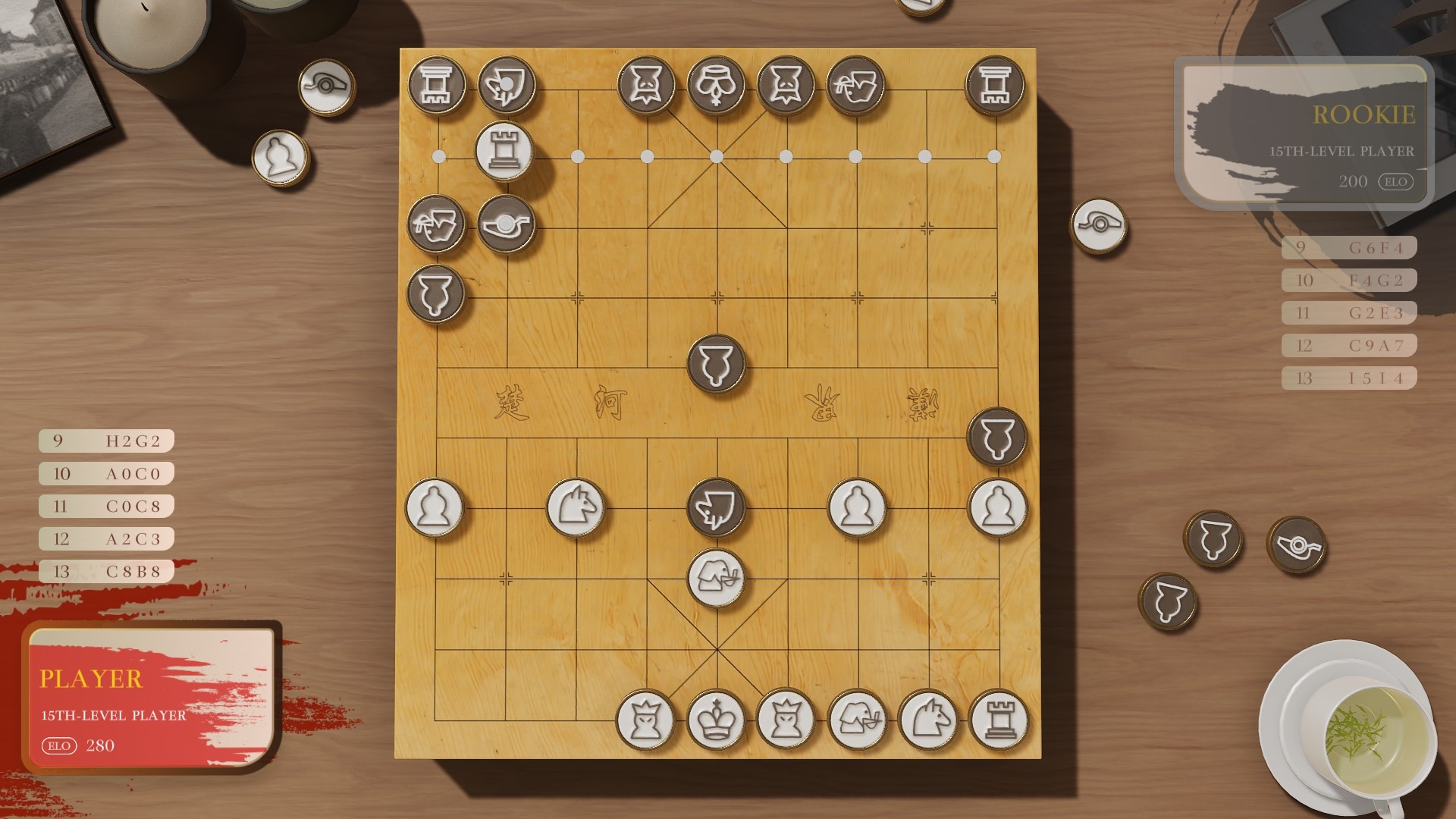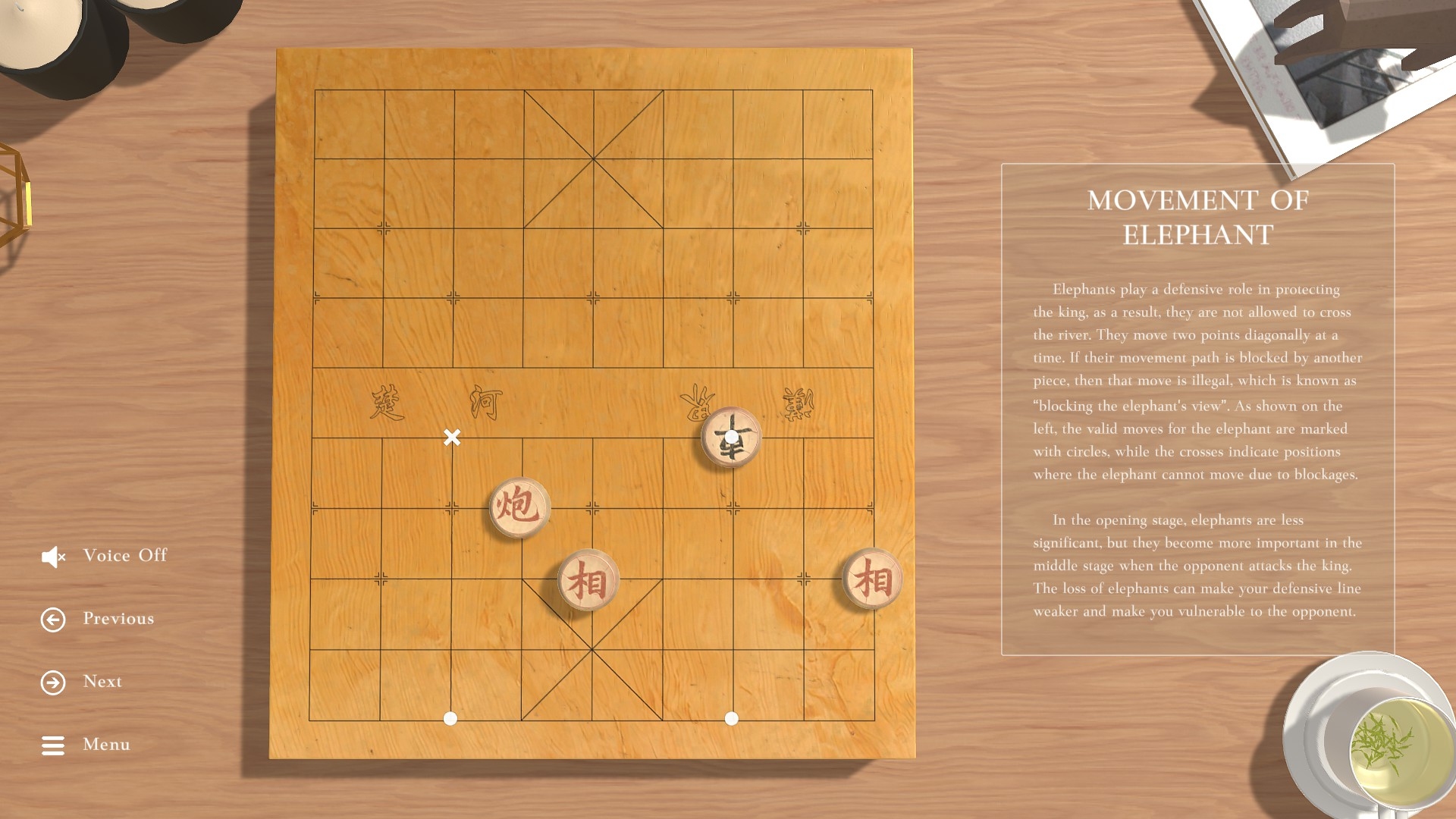Xiangqi, the Chinese form of chess, has more WA (wargamer appeal) than the western variety. Its combat might be just as deterministic, but a board that boasts actual topography, and armies that include artillery units capable of stylised indirect fire, makes it feel groggier.

That board topography consists of two nine-intersection* palaces that restrict the movement of kings/generals and bishops/advisors (two of the game’s seven unit types) and a central river that both intimidates elephants (a piece with no western equivalent), and, once crossed, alters the capabilities of pawns/soldiers.
* In Xiangqi, pieces occupy grid intersections rather than grid squares.

Intrigued? The stylish Just Xiangqi demo is a good teacher and lets trialists spar against seven levels of artificial opponent. While you’re finding your feet I recommend playing with ‘resin’ pieces as these feature icons rather than traditional pictograms.


Thanks for the tip! I’ve only heard about the Japanese chess variety, this is something new and probably less meta-dependant than classic chess, at least for my crowd